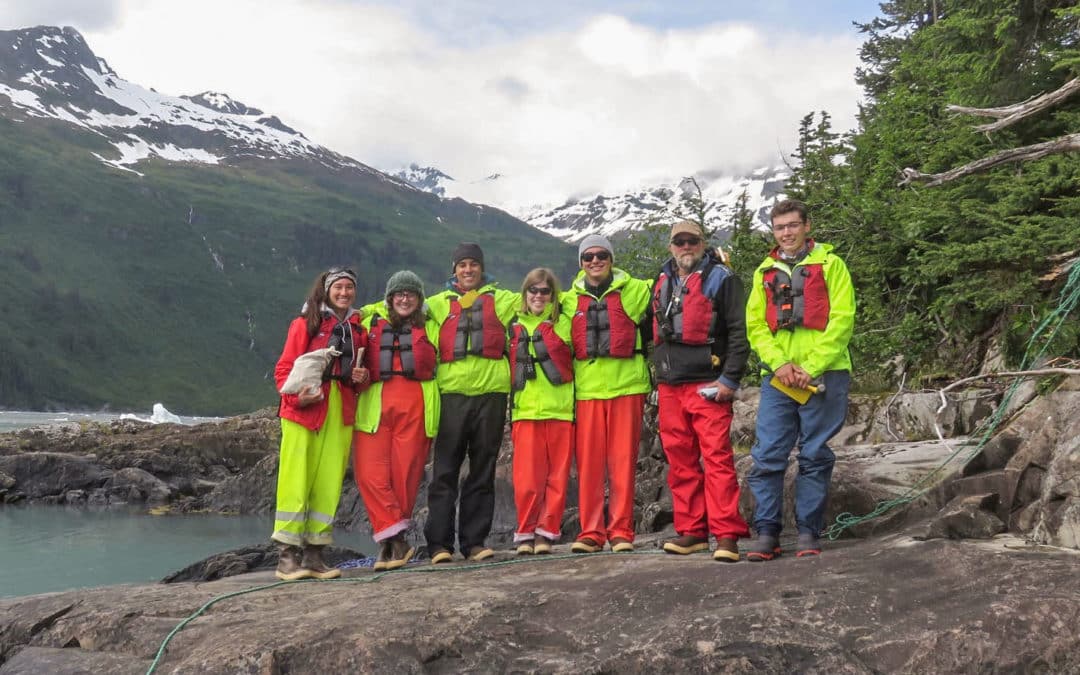Keck Alaska 2018 research team standing on a thick sandstone bed of the Valdez turbidites near Meares Glacier at the end of Unakwik Inlet, Prince William Sound, Alaska.
Submitted by Cameron Davidson (Carleton College)
The Keck Alaska team made up of John Garver (Union College) and Cam Davidson (Carleton College), and six students, Will Fisher (Union), Victor Garcia (UT-Austin), Nick Gross-Almonte (Carleton), Alysala Malik (Carleton), Caitlin Noseworthy (St Norbert), and Mollie Pope (Union) spent four weeks in northern Prince William Sound, Alaska. We also had the pleasure of being joined by Caitlin’s research advisor, Professor Tim Flood (St Norbert College) for a few days while we were in Valdez. Our field effort included collecting over 70 samples from the Valdez and Orca Groups of the Chugach-Prince William terrane (CPW) along two roughly N-S transects across the Contact Fault. We already have mineral separates from 22 sandstones, with more in the pipeline, and have sent 36 volcanic and plutonic samples to the Hamilton Analytical Laboratory for whole-rock geochemistry. Will Fisher, Alysala Malik, and Nick Gross-Almonte will be using U-Pb zircon dating of detrital zircon from sandstone samples collected along the N-S transects to help constrain strike slip motion across various faults associated with the Contact Fault and to test if the rocks of the CPW were deposited in California and subsequently transported to Alaska, or if they more or less formed in place where we find then today. Mollie Pope is focusing on conglomerates found in the Orca turbidites and is using U-Pb zircon dating of detrital zircon from sandstone clasts to test models of sediment recycling in the CPW basin. Caitlin Noseworthy is using whole rock geochemistry from basaltic volcanic rocks associated with the so-called Glacier Island Ophiolite to test tectonic models for the emplacement of the ophiolite into the Orca turbidites, and Victor Garcia is using U-Pb dating and whole rock geochemistry to determine the age and origin of the Cedar Bay pluton that was emplaced into the CPW late(?) in its history. If all goes well we plan to present this work at the spring GSA Cordilleran Section meeting in Portland in 2019.

